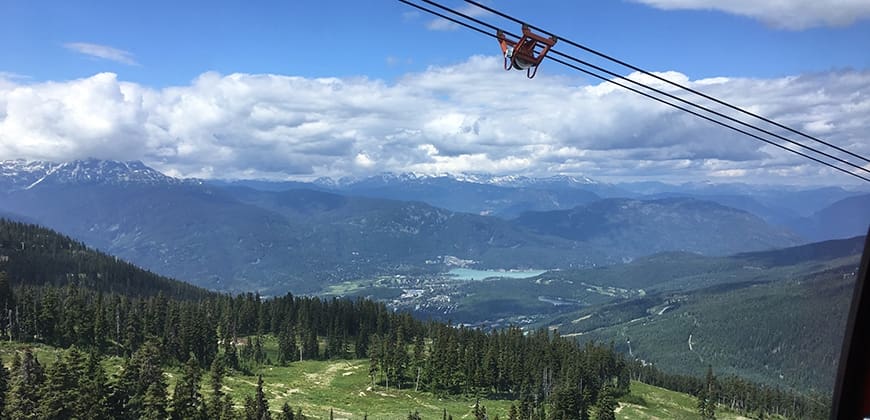Onsite Industry Insights for new Planning Developers

In July 2018, students from the Master of Engineering Leadership (MEL) in Urban Systems travelled to Whistler, BC to participate in a two day onsite trip to explore active industry facilities and make meaningful connections with relevant industry professionals. The students visited several infrastructures that included the Fitzsimmons Creek Hydroelectric Project and presented program project proposals to infrastructure and municipal representatives.
While in Whistler, the students had the opportunity to present their final program projects on the development and analysis of live case studies, which included Blatchford, Alberta to the City of Edmonton and asset management recommendations for Metro Vancouver cities.
“This opportunity took us out of the classroom and put us in a setting that could be similar to what we face in the real world. Building on this the networking aspect, while an added bonus for career development, is also an important skill that the program fosters and this trip really allowed us to build on these skills and meet with industry professionals and understand what their needs are, and how we can help meet them.” (Colin Jeffery)
As part of the Urban Systems program, students participate in specialized courses such as URSY 530 (Urban Systems Engineering) and URSY 540 (Urban Systems Project Delivery and Economics), which utilize applied technical learnings to solve real-life problems. Presenting in front of Industry panels allowed the students relevant feedback from industry professionals and technical experts.
“The course has really highlighted the importance of public speaking and engaging stakeholders. This opportunity took us out of the classroom and put us in a setting that could be similar to what we face in the real world.” (Colin Jeffery)
In addition, later that day there was an opportunity for students to network with professionals and industry peers, allowing the chance to discuss the latest industry trends, career opportunities and current market dynamics.
The following day, students toured and observed different infrastructures of Whistler, BC. A geographical area that provide a unique set of urban systems, which uses natural features of its landscape to benefit a population. Starting with the Fitzsimmons Creek Hydroelectric Project, a run-of-river power generating facility. This hydroelectric project was completed in January 2010 with an installed capacity of 7.9 MW and anticipated to generate 30,000 MWh in annual energy output. The students were able to learn from Innergex Renewable Energy Inc. representatives about the operations of the facility and asset management strategies. This was followed by a visit to the Whistler Flood Protection Dike. Focusing on the local infrastructure, city planning and design allowed students to gain on-hands and practical learning regarding the hazards of flooding and the British Columbia dike systems. As a final destination for the trip, students travelled to the Whistler Peak Suspension Bridge and the PEAK 2 PEAK Gondola to wrap up their journey, celebrate the accomplishments for the halfway mark of the program and connect with their peers regarding their latest experience.
“From a technical standpoint, we were able to tour a number of urban systems and see them on a different scale from what we would be exposed to in Metro Vancouver. The Fitzsimmons Creek tour really highlighted the ability to develop sustainable energy systems that have minimal impact on the environment but still meet the needs of the urban systems.” (Collins Jeffery)
Ultimately, the trip connected students with Urban Systems project objectives and applications to solving real-world problems in industry while gaining an appreciation for the latest business and environmental challenges being faced.
Find out more about the MEL in Urban Systems program and how it could work for you.
Urban Systems
Assess your Eligibility
Determine if your professional experience and academic background make you a fit for your desired program.
Start AssessmentFeatured Faculty and Staff



